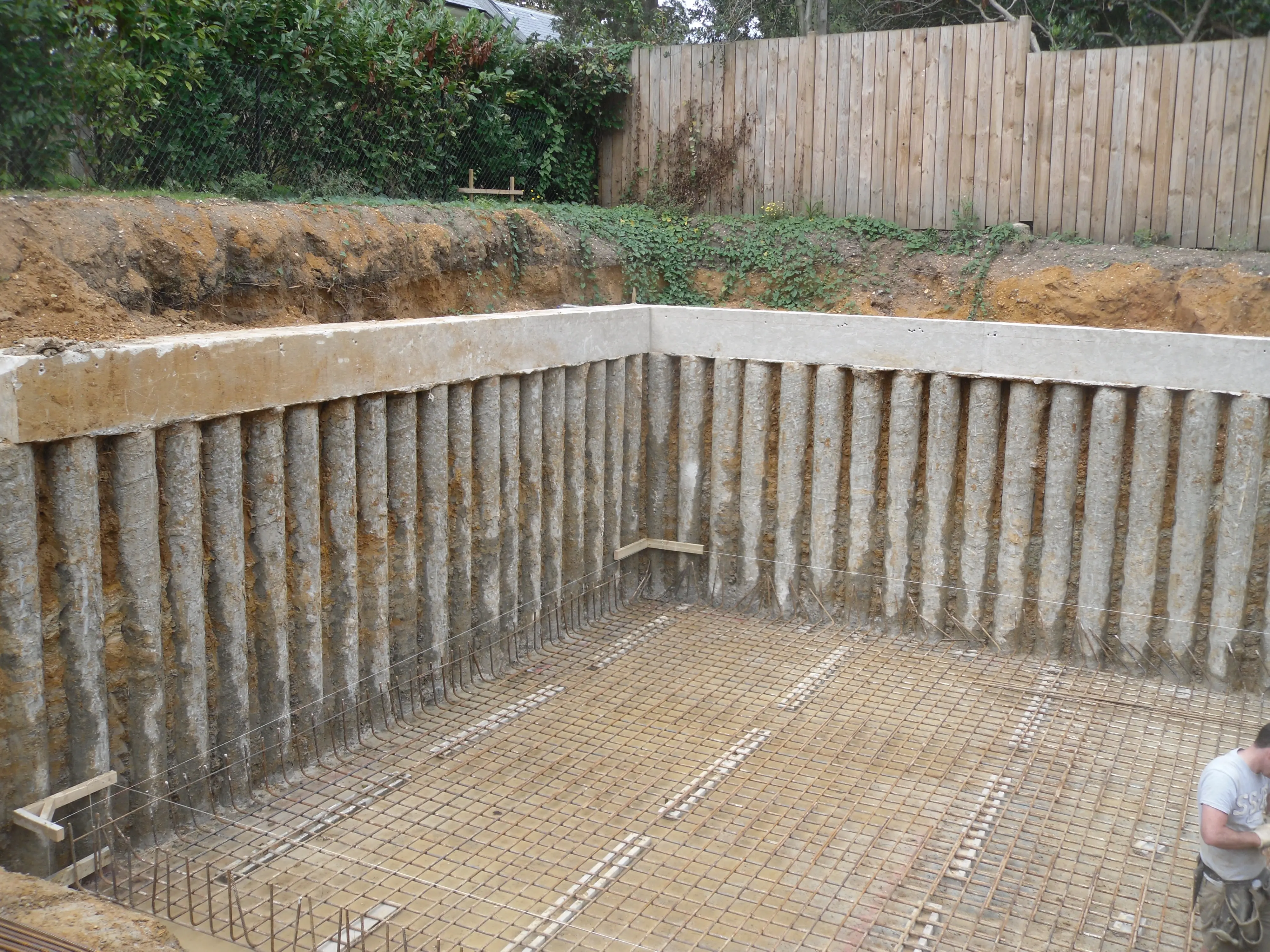
16 Sep What Is Contiguous Piling Used For?
Piling is one of the most effective and versatile ways of creating a strong foundation, used for everything from underpinning domestic homes to anchoring major engineering structures like bridges or oil rigs. However, its use doesn’t end there. Piling can also be an efficient and cost-effective way of constructing a retaining wall, by using contiguous piling.
What Is Contiguous Piling?
Contiguous piling is a way of creating a retaining wall by inserting a row of augured piles that almost touch one another. The most common ways of inserting an augured pile are either:
- to bore a hole with continuous steel sections, which can then be removed and the hole filled with concrete, or
- to bore with a continuous steel flight, which can then have grout pumped into the hollow centre as it’s removed.
The piles are inserted with the gaps between them typically around 50-150mm. These gaps, with earth packed between them, can be grouted, and then a second wall may be constructed in front of the piles.
What Are Its Uses?
The most common use of contiguous piling is for constructing basements or cellars, where the piles can be inserted and then used as a retaining wall already in place as the basement is excavated. If desired, they can then be removed and replace by a solid retaining wall, but it’s usually more effective to leave them in place and, as described, add a second wall in front.
The other main uses include for inserting substructures close to an existing structure, where extensive excavation might not be practical, or for stabilising inclines or slopes. Alternatively, contiguous piling can be used to maintain the ground on adjoining properties.
What Are the Advantages and Disadvantages of Contiguous Piling?
The biggest advantage of contiguous piling is that the process of inserting them creates very little vibration. Because the piles are bored, rather than driven, noise and shaking are kept to a minimum, making this method ideal for use in built-up areas or close to other structures.
In addition, compared with other ways of putting in subterranean retaining walls, contiguous piling requires little or no extra excavation. This makes it perfect for use in confined spaces or, again, near other structures.
While there are few, if any, genuine disadvantages to contiguous piling, like any construction technique there are situations where it isn’t the best option. In particular, it’s not generally suitable for soil with a high water content — it works best in dry, firm soil.
Do you want to find out more? Give us a call to discuss the needs of your project.




